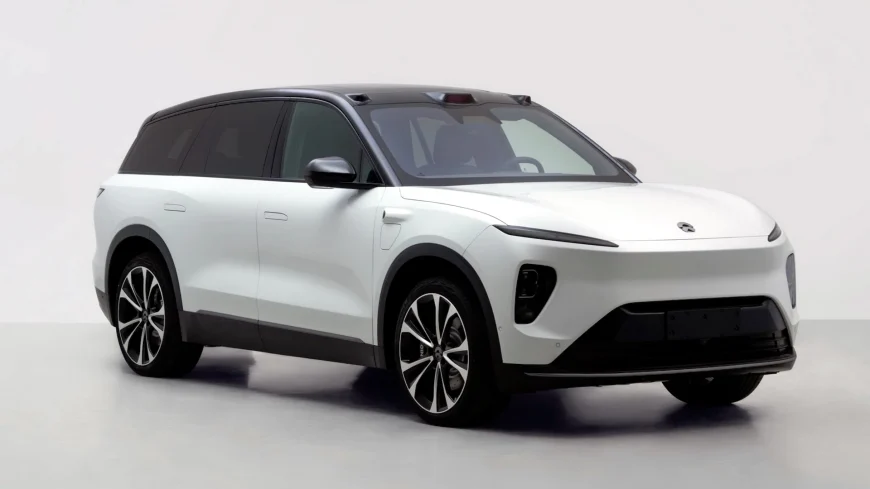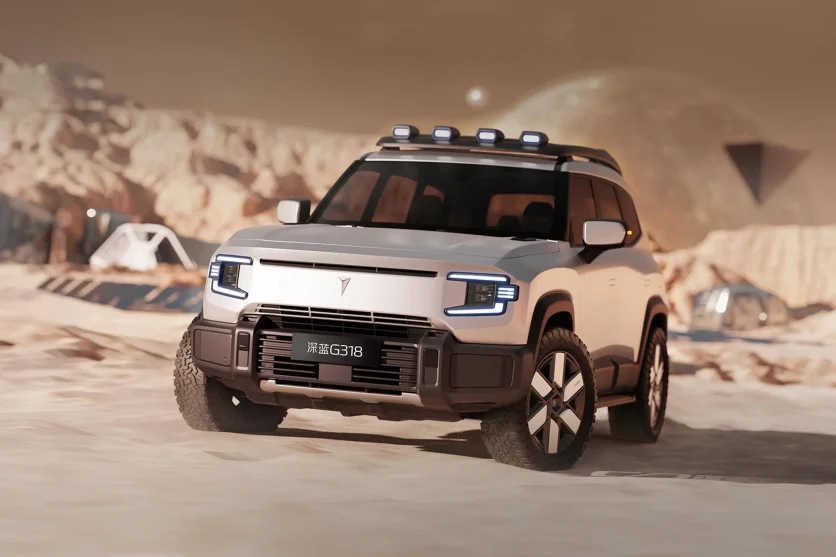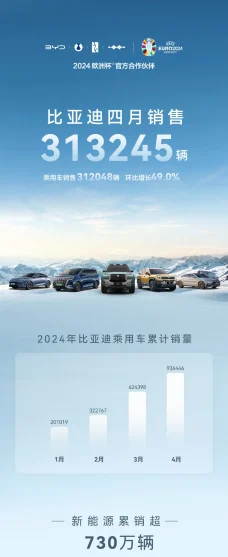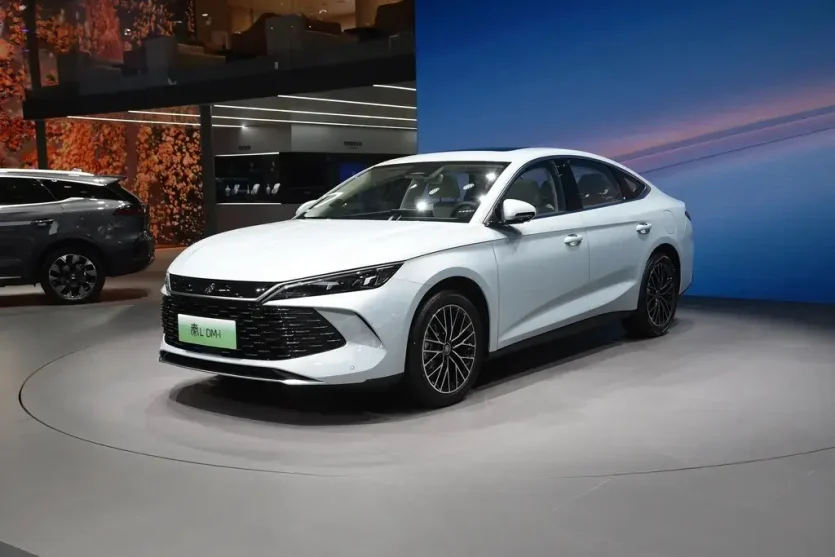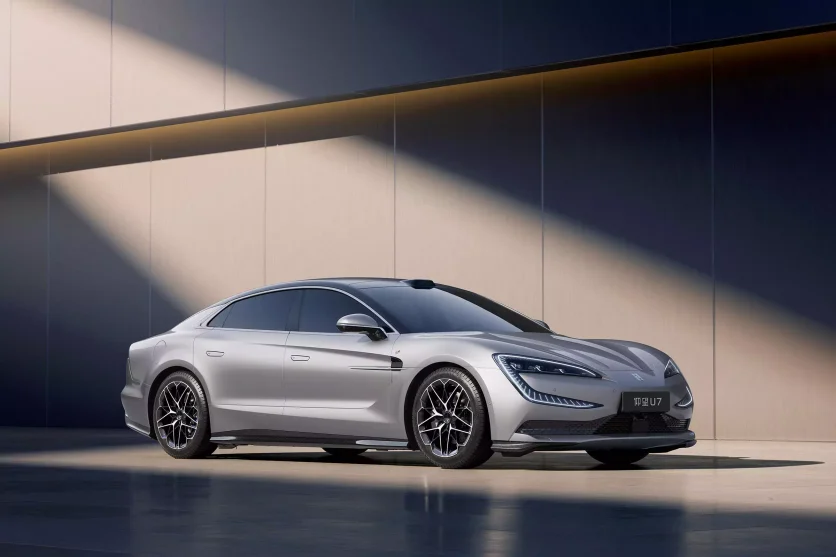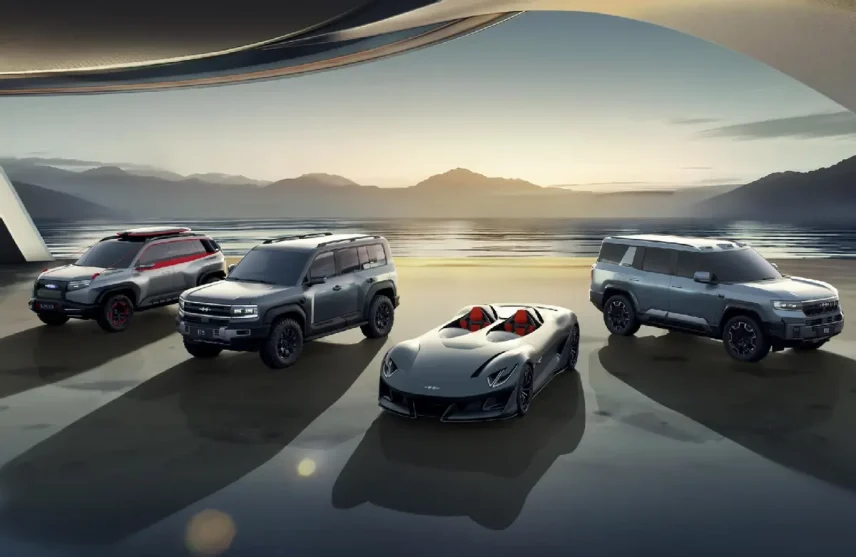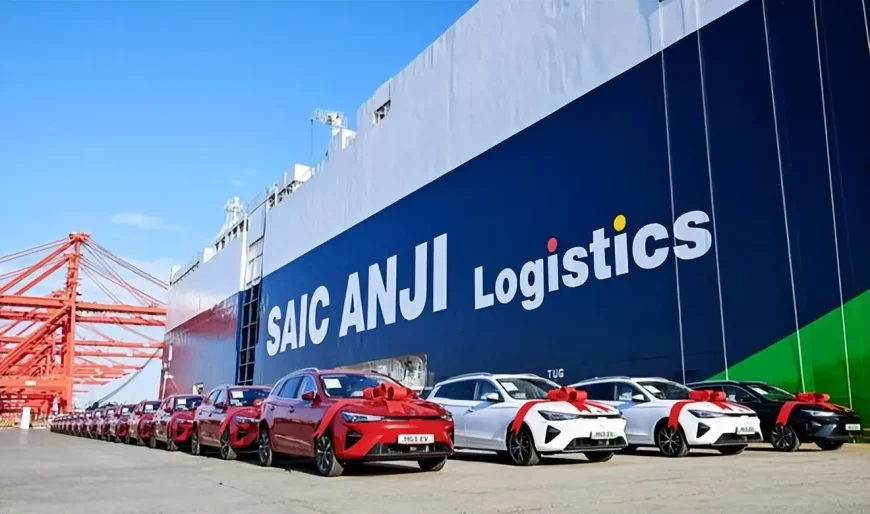How to Choose A Compact SUV for Your Family – the 6 Best Choices
If you’re looking for a stylish and versatile vehicle for the whole family, nothing comes close to beating the compact SUV. These revolutionary vehicles have made a significant impact on the automotive world since 1984 Jeep Cherokee XJ introduced this concept to the world, and as we step into the 2020s, China has established a name for coming out with some of the best compact SUVs money can buy. Today, we’ll tell you all about the 6 best Chinese Compact SUVs that deserve your attention, and what makes them miles better than the rest of the competition.
NIO ES8
Kicking off the list is one of the most technologically advanced Chinese SUVs in recent memory – the Nio ES8. Based on a unique skateboard platform and penned in Germany, this all-electric SUV is taking the price of European SUVs twice its price.
The range is one of the main factors any buyer would have to think twice about before picking up a brand-new electric SUV, and with a 222-mile range, you won’t have to be worried about taking the ES8 on cross-country tips. Want to know what’s better? It only takes 90 minutes to fully charge this stylish SUV.
BYD Tang EV

Next up is another all-electric SUV, and this one promises to “Build Your Dreams.” Cliched name aside, the BYD Tang EV is another impressive EV SUV to come out of China, and its 100 kWh battery unlocks up to 530 kilometers of range on a full charge.
Want some excitement in your next family adventure? The Tang EV has you covered on that front as well. 0 to 100 km/h takes a mere 4.9 seconds, and the all-wheel drive powertrain makes sure that you stay glued to the road no matter how slippery the road gets.
Lynk & Co 01

Lynk & Co might be a newcomer in the Chinese auto industry, but it is quickly making waves as the ‘Next Big Thing.’ The 01 is their entry into the compact crossover segment, and it pairs a fuel-efficient gasoline powertrain with a Permanent Magnet Synchronous Motor and a 9 kWh Lithium-ion battery for unparalleled performance and efficiency.
The Lynk & Co 01 shares much of its underpinnings with the popular Volvo XC40, and shares a similar 5.5-star safety rating. If you are looking for a sleek and stylish SUV, this one deserves your attention!
Hongqi HS5
Hongqi is one of the most prestigious brands in the Chinese automotive industry, and the HS5 turns a new chapter in the brand’s history books. The HS5 is one of the first Hongqi’s to appeal to the masses, with a stylish body designed by the maestros at Italdesign and internals shared with the popular Audi A5.
Powered by a 220-horsepower, 2.0-liter four-cylinder engine, the HS5 comes with a 6-speed automatic transmission with an unprecedented 5 drive modes. What’s more is that it comes with an intelligent BorgWarner all-wheel-drive system and an advanced suspension system, making the HS5 equally capable both on and off the road.
Geely Icon

The Geely Icon is one of the most futuristic-looking SUVs on this list, with an eye-catching “8-bit” design that makes it stand apart from the rest. Taking design influence from the French side of things, the Icon pairs a 177-horsepower, 3-cylinder turbocharged engine with an advanced hybrid system and a 7-speed dual-clutch transmission for a well-rounded package at an affordable price point, making it another compact SUV that deserves your hard-earned cash.
The interior of the Geely Icon is equally impressive, with a two-tone finish just like the exterior, two high-definition displays, a massive panoramic sunroof, and ambient lighting fixtures that you can change depending on your mood.
The Icon is well-equipped on the safety front as well, with automatic emergency braking, 360-degree surround cameras, parking assistance, and lane change assistance all coming as standard.
BYD ATTO 3
The ATTO 3 is the second BYD model to make an appearance on this list, and this is for a good reason. As you might have guessed, the ATTO 3 is all-electric and comes with a 260-mile range and a 0 to 60 time of 7.3 seconds. The exterior of the ATTO 3 might not be off-the-charts as some of its rivals, but there’s something we quite like about the understated design.
The interior is where BYD has delivered in spades, with a swooping dashboard, a kettlebell-shaped gear selector knob, and door handles that stylishly wrap around the speakers. The front seats are electrically adjustable, and the seating position is also higher than what the rest of the pack offers.
As you might have guessed, the ATTO 3 also has a vast number of safety features cramped into it, and for the price you pay, it’s hard to argue about the value for money the ATTO 3 provides.
Changan CS75 Plus
Now, we come to the final entry on our list, and we have saved the best for last. The Changan CS75 Plus is one of the most popular SUVs in China, and if it continues to be this impressive, that popularity isn’t going anywhere.
The CS75 is one of the oldest compact SUVs from China still in production, having made its debut all the way back in 2013. The second generation CS75 was introduced in 2022, and it’s still going strong!
With a 2.0-liter turbocharged Blue Core engine paired with an 8-speed transmission, the CS75 certainly does not lack performance. The exterior is pure eye candy, with swoopy LED headlights and a sloping roofline capturing the attention of every passerby. Practicality also takes precedence, with a rear cargo volume of 620 liters which goes all the way up to 140 liters when the rear seats are folded down.
Practicality, performance, comfort, technology, range, and safety are just a few factors you should consider when choosing a compact SUV, and all the models we talked about here deliver all that and more in spades.
How to Choose a Suitable Vehicle for Electric Off-Roading
For a long time, internal combustion engines have dominated the off-roading scene, taming wild terrains and conquering mountains. However, a new era is emerging, powered by silent torque and eco-friendly exploration. Electric vehicles (EVs) are carving a niche in the off-road world, offering unique capabilities and addressing environmental concerns.
Choosing an electric off-road vehicle (E-ORV) requires a shift in thinking. In this article, we’ll delve into the exciting realm of electric off-roading and highlight key factors to consider when selecting your ideal electric adventure companion.
The Benefits of Electric Off-Roading
Electric motors bring several advantages to off-road driving:
(1) Instant Torque:
Unlike gasoline engines that build power gradually due to gear ratios, electric motors deliver instant torque when you press the accelerator. This translates to superior low-end power for climbing steep hills, navigating rocky paths, and powering through mud. It also makes the vehicle exceptionally quick on regular roads.
(2) Silent Operation:
The quiet nature of E-ORVs allows you to experience the natural sounds around you, making off-roading a more immersive and wildlife-friendly activity. Loud engines can scare away wildlife and drown out important sounds, like shifting rocks, that are crucial while off-roading.
(3) Low Center of Gravity:
EV batteries are typically mounted under the floor, lowering the center of gravity. This enhances stability on uneven terrain, reducing the risk of rollovers and improving street performance.
(4) Regenerative Braking:
Descending hills is common in off-roading. E-ORVs use regenerative braking, which converts downhill momentum into battery power, extending range and providing additional control on steep descents.
Types of Electric Off-Road Vehicles
The e-ORV market is diverse, catering to various needs and budgets. Here’s a look at the main categories:
(1) Electric SUVs and Trucks:
These full-size vehicles are popular in the off-road sector for their size, durability, and practicality. Examples include the Changan Deepal G318 and the GWM Tank 700 Hi4-T.
(2) UTVs (Utility Task Vehicles):
UTVs are smaller, open-air vehicles perfect for navigating tight trails and technical terrains.
(3) Electric Bikes and Motorcycles:
For two-wheeled enthusiasts, electric dirt bikes and motorcycles provide a lightweight, nimble experience with near-silent operation.
Choosing Your Electric Off-Road Companion: Key Considerations
Beyond the type of vehicle, here are crucial factors to ponder when selecting your e-ORV:
(1) Range:
Range anxiety is a significant concern for off-roading, where charging stations are often scarce. Consider the typical distance of your adventures and choose an e-ORV with a range that comfortably exceeds those needs. Remember, off-road driving can significantly reduce range due to challenging terrain and increased power usage.
(2) Ground Clearance:
The ability to clear obstacles is vital for off-roading. Look for vehicles with ample ground clearance to avoid scraping the undercarriage on rocks or uneven surfaces. Many electric SUVs and trucks offer adjustable suspension for additional clearance when needed.
(3) Approach and Departure Angles:
These angles determine how steep an incline or decline the e-ORV can handle without scraping the front or rear bumper. Opt for vehicles with good approach and departure angles to tackle varied terrains effectively.
(4) Water Fording Depth:
If crossing rivers or streams is part of your off-road adventures, water fording depth becomes crucial. Ensure your e-ORV can handle the expected water depth.
(5) Winching Capability:
Getting stuck is a possibility off-road. Choose an e-ORV with strong winch points or an integrated winch for self-recovery or assisting others.
(6) Charging Options:
While charging infrastructure is improving, remote areas might lack readily available charging stations. Consider e-ORVs with Level 3 DC fast-charging capabilities for quicker top-ups. Explore portable charging solutions like solar panels or generators for extended expeditions.
(7) Durability and Build Quality:
Off-roading is tough on vehicles. Opt for e-ORVs with robust construction, high-quality materials, and a proven track record of reliability on challenging terrains.
Beyond the Vehicle: Gearing Up for Electric Off-Roading
After selecting your ideal e-ORV, consider these additional elements to ensure a successful off-road adventure:
(1) Off-Road Tires:
Equip your e-ORV with all-terrain or mud-terrain tires for superior grip and traction on loose surfaces.
(2) Recovery Gear:
Pack essential recovery gear like tow straps, traction mats, and a shovel for potential mishaps.
(3) Safety Gear:
Always prioritize safety. Wear a helmet, proper clothing, and eye protection while off-roading.
(4) Planning and Knowledge:
Research the terrain you intend to explore. Know your limitations and the capabilities of your e-ORV. Practice off-road driving techniques in a safe environment before tackling challenging trails.
(5) Leave No Trace:
Respect the environment. Practice responsible off-roading by sticking to designated trails, minimizing impact on wildlife, and packing out all trash.
The Future of Electric Off-Roading: A Brighter Path
Electric off-roading is still in its early stages but evolving rapidly. Battery technology continues to improve, offering greater range and shorter charging times. The coming years will likely see a surge in e-ORV options catering to diverse needs and budgets.
Embracing electric off-roading paves the way for a more sustainable future for off-road enthusiasts and the natural world alike.
So, ditch the roar and embrace the hum. The world of electric off-roading awaits, promising silent power, endless exploration, and the chance to be part of a sustainable adventure. Here at GuangcaiAuto, we have fantastic vehicles like the Fangchengbao Bao 5 that perfectly align with this article. Feel free to check them out!
Three Recommended Models Tested on Off-Road Sections
BYD Qin L DM-i: Another Competitive Product From BYD
BYD: A Leader in the Electric Vehicle Market
In recent years, BYD (Build Your Dreams) has solidified its position as a major player in China’s electric vehicle market. The Shenzhen-based company has seen a meteoric rise in its stock following the launch of several new models.
Now, BYD is back with the BYD Qin L DM-i, a hybrid mid-size sedan with an attractive starting price of $16,000, poised to set a new trend in this highly competitive segment.
The Qin L DM-i: A New Addition to BYD’s Dynasty Series
The BYD Qin L DM-i joins the Dynasty lineup, which includes popular models like the Tang mid-size crossover and the sporty Han executive sedan. The Qin L DM-i is both longer and wider than its sibling, the Qin Plus DM-i, with dimensions of 4765 mm in length, 1837 mm in width, and a wheelbase of 2718 mm.
The exterior showcases BYD’s ‘Dragon Face’ design language, featuring a substantial front grille with chrome accents flanked by sleek headlights. The rear design is equally impressive, with a stylish light bar inspired by traditional Chinese knots.
The muscular waistline and aerodynamic elements from the front to the rear make the Qin L DM-i stand out in its class.
Luxurious Interior Design
The interior of the Qin L DM-i is nothing short of breathtaking. Inspired by Chinese landscape paintings, it combines simplicity and elegance. BYD has integrated elements from the rear taillights into the cabin design, creating a cohesive look. A rotating 15.6-inch high-definition screen dominates the dashboard, complemented by an 8.8-inch digital gauge cluster.
The Qin L DM-i offers numerous optional extras, including a roof-mounted sunglasses case, a knitted fabric roof, heated and ventilated seats, an upgraded 8-speaker audio system, an integrated dashcam, and a panoramic sunroof.
Advanced Safety Features
Safety is a top priority for BYD, and the Qin L DM-i is equipped with a comprehensive suite of safety features. Key highlights include blind spot detection, traction control, electronic brakeforce distribution, integrated power brakes, adaptive cruise control, traffic sign recognition, rear cross-traffic alert, and lane change assistance.
All models come with six airbags for enhanced protection, and higher-spec versions include the DiPilot L2 driving assistance system, reflecting the latest trends in autonomous driving technology.
The Innovative Fifth-Generation DM-i Hybrid Platform
The Qin L DM-i is one of the first models to feature BYD’s fifth-generation hybrid technology. The DM (Dual Mode) hybrid technology has evolved since its inception in 2008, with the fourth generation debuting in 2021.
The DM platform was then divided into two lines: the performance-oriented DM-p and the efficiency-focused DM-i.
Unmatched Fuel Efficiency and Range
BYD makes bold claims about its latest DM-i platform, boasting a thermal efficiency rate of 46.06% and a combined driving range of up to 2100 kilometers. The fifth-generation DM-i hybrid platform also delivers an impressive fuel consumption figure of 2.9L/100 km, a significant improvement over the previous generation’s 3.8L/100 km.
In CLTC mode, the Qin L DM-i achieves an impressive 10.7 kWh/100 km, thanks to its AI energy consumption management technology that optimizes synchronization between the internal combustion engine and the electric powertrain.
Powerful Performance
Under the hood, the Qin L DM-i features the BYD 472QA – a 1.5-liter four-cylinder gasoline engine delivering 74 kW of power and 126 Nm of torque. While these figures might not seem extraordinary on their own, they are enhanced by the electric components.
The base model pairs the engine with a 120 kW electric motor and a 10.08 kWh battery, while higher-spec models feature a 160 kW motor and a more powerful 15.874 kWh Lithium Iron Phosphate battery.
The combined power output enables the Qin L DM-i to accelerate from 0 to 100 km/h in just 7.3 seconds and reach a top speed of 180 km/h.
Despite this performance, the Qin L DM-i still offers an all-electric range of 80 km for the base model and a class-leading 120 km for the higher-spec model, making it ideal for both short trips and long journeys.
Market Reception and Future Outlook
BYD’s innovations with the Qin L DM-i have not gone unnoticed, as over 5000 units were sold within the first three days of its launch. The car’s appealing looks, impressive interior, and class-leading efficiency suggest that the Qin L DM-i has the potential to revolutionize the mid-size sedan market. With the 2024 Qin L DM-i, BYD aims to take the automotive world by storm.
China Cars In Ethiopia
Ethiopia needs affordable transportations options. Ethiopia’s car market has always been unpredictable, with used cars dominating for many years. China in this regard seems to be the best option in terms of affordability.
High import taxes, combined with economic difficulties, have created significant obstacles for many individuals seeking to purchase new cars. Moreover, both new and used car sales have experienced a considerable uptick, as reported by Mordor Intel.
- One of the hurdles stalling market growth has been the imposition of exorbitant import taxes.
- Taxes have elevated new cars to a status of luxury, placing them beyond the financial grasp of many prospective buyers.
- Finding spare parts and reliable after-sales service has been a significant challenge for keeping cars running smoothly.
Despite facing various obstacles, Chinese car manufacturers have successfully captured the interest and purchasing power of Ethiopian consumers.
Renowned brands such as BYD, Chery, and Geely have cemented their presence by offering affordable yet feature-packed models.
Notably, vehicles like the BYD F3 and Geely Emgrand are gaining traction, owing to their attractive blend of cost-effectiveness and dependability.

Chinese Automobile Market in Ethiopia
The Ethiopian government has implemented appropriate trade liberalization policies OR Chinese car import regulations in Ethiopia in order to encourage Investor flights and low cost new vehicles. Some of these are the reduction of import duties on new and used vehicles, especially new cars, as well as offering fiscal incentives such as tax credits for the purchase of EVs.
The current government of Ethiopia recently liberalized the rules for import of EV parts with no duties to encourage the use of green transport. This policy change seeks to make a new generation of vehicles, particularly electrically powered models more accessible to the Ethiopian customer.
Several factors have contributed to the increased importation of Chinese cars to Ethiopia, these factors entail; shifts in trade relations, changes in policies concerning trade, investment by the Chinese automobile companies, and changing market demands for affordable and differentiated car models.
Why buy Chinese cars in Ethiopia
- Affordability: The Chinese cars also cost relatively lower than the Japanese, American or the European cars and hence are affordable to more people. This cost is quite appealing to the Ethiopian customers who desire cheaper transport means and services.
- Advanced Features: While most Chinese cars are cheaper compared to the likes of Toyota, they also contain modern trappings that will attract informed consumers. Such aspects include safety, entertainment, and powertrain management in a manner that makes them offer a good package in the market.
- Improved Quality and Perception: Quality of cars manufactured by Chinese automakers has enhanced greatly and social and economic issues earlier felt regarding reliability and durability are less of a concern now. Some of the brands that are currently dominating the market include BYD, Chery, and Geely; these car makers have over time greatly improved the quality of their cars and thus placed confidence with the Ethiopian consumers.
Chinese cars offer an appealing alternative in Ethiopia’s diverse and evolving market, as European luxury sedans struggle to cater to the masses.

What Chinese car brands are in Ethiopia?
Ethiopian consumers have been a target of Chinese car manufacturers in particular due to the following reasons. Some car makers of this caliber include BYD, Chery and Geely set models that are not only affordable but contain most of the gimmicks.
- BYD: With electric and plug-in hybrid automobiles, BYD has been steadily increasing its market share in Ethiopia with some of its models including BYD F3 and BYD Tang which are widely known for their affordable prices and new generation features.
- Chery: This is a state owned automobile manufacturing company which deals with production of various models of cars mainly/passenger cars and SUVs. These include models like the Chery Tiggo and other cars have started to make their way into the Ethiopian market because they are very reliable and the cost of maintaining them is very cheap.
- Geely: Companies like Geely, the owner of Volvo and Lotus, set heart into their affordable automobiles yet equipped with numerous functions. New generation vehicles are some of the Automobiles that have flooded the Ethiopian market and some of the popular models include the Geely Emgrand.
These brands are not only emerging to compete regarding the prices they offer but also because the middle-income earners of Ethiopians are also considered to get value for the quality and features offered on these brands. Furthermore, the Ethiopian government has set policies that require people or companies to use more fuel-efficient cars, and this is something that falls squarely within the domains of those Chinese car makers.
What is the best selling car in Ethiopia?
Recently, Toyota Hilux is ranked among the most Popular Chinese-made car models in Ethiopia. The Toyota hilux has been known in the market as a very popular model mainly because of factors such as durability, reliability and versatility that the car gains from due to its usability in both urban and rural areas.

Due to the strength of the material that has been used in its construction and the ability of getting spare parts in most places in the country, people tend to like it. It is widely employed in such segments owing to its versatility, such as agriculture, construction, government and NGOs use and purchase, and other segments.
Another highly popular model at the moment is the Toyota Corolla. Specifically, the ninth generation Corolla and other generations such as the tenth, eleventh generations of the car (models 2000-present) are some of the most frequently spotted vehicles in Ethiopia.
They are preferred because of their efficiency and affordable prices and as a result, many of them are noticed on the Ethiopian roads as mentioned in “All About Ethiopia”.
Local Chinese manufacturers are also penetrating the market with the likes of BYD and Chery, with the BYD F3 and Chery Tiggo now fairly common owing to their affordability and compared to other cars in their class can be considered quite contemporary.
Cost of Chinese cars in Ethiopia
The cost of Chinese cars in Ethiopia can vary significantly depending on the make, model, and features of the vehicle. Here’s an overview of some common Chinese car brands and their prices in Ethiopia:
- BYD Yuan Up Single Motor: Approximately 750,400 ETB.
- BYD Yangwang U7 (2024): Approximately 7,840,000 ETB.
- Geely Panda Knight Luxury: Approximately 616,000 ETB.
- Dongfeng Nammi 01 EV: Approximately 582,400 ETB.
- MG Cyberster 100th Anniversary Edition: Approximately 3,904,880 ETB.
These prices illustrate the range from more affordable models like the Geely Panda to more high-end options like the BYD Yangwang U7.
Electric cars, which are becoming increasingly popular in Ethiopia due to government incentives and tax exemptions, can range from around 500,000 ETB to over 2,000,000 ETB for various models.
This shift towards electric vehicles is part of Ethiopia’s broader strategy to adopt eco-friendly transportation solutions.
Future of Chinese cars in Ethiopia
The Ethiopian government has set a bold target to deploy nearly 500,000 electric vehicles (EVs) over the next decade, significantly advancing its shift towards sustainable transportation.
Initially, the plan includes importing around 148,000 electric vehicles and 48,555 electric buses.
This ambitious strategy is part of a broader ten-year plan, which is expected to be achieved well ahead of schedule, prompting the government to revise its target to 439,000 EVs by 2030.
● Government Incentives
To encourage this change the Ethiopian government has enforced the following incentives; These are; importation of parts for assembly, free taxes, a 5% tax on parts that are partially assembled EVs and a 15% tax on fully assembled EVs. These incentives are intended to make electric vehicles more attractive than gasoline vehicles because the latter attracts high import taxes.

● Economic and Environmental Benefits
Minister of State for Transport and Logistics, Barreo Hasen, pointed out the position of economics in considering this change, relying on the fact that it will save large amounts of foreign currency, which Yemen spends on importing fuel. The Ethiopian government alone consumed about $6 billion for fuel in the year 2023 out of which over fifty percent was utilized for fuel-powered automobiles. Moreover, the change in the vehicle type to those that are electric has the potential of decreasing pollution within urban areas tremendously.
● Private Sector Involvement
The government’s push for EVs has also spurred private sector engagement. Companies like Belayneh Kindie Metal Engineering Complex are now assembling electric mini buses locally, using components imported from China. For instance, China’s King Long supplies parts for electric mini buses and larger buses, catering to Ethiopia’s growing demand for EVs.
Besufekad Shewaye, general manager of Belayneh Kindie Metal Engineering Complex, said in an interview that Ethiopia’s rich hydropower resources provide a solid foundation for the country’s electric vehicle market. Starting from mid 2023, the company has commissioned and fed 216 electric mini buses into the Ethiopian market and has marketed half of these products to the transportation service providers and government agents.
These developments show potential to grow the automotive industry in Ethiopia in the next coming years with due emphasis on electric vehicles in order to reduce fuel importation and environmental degrading effects.
Top 10 sales of electric cars in China in April 2024
Time flies, April 2024 has passed. Let us review the sales performance of various Chinese automobile manufacturers in April.

The above are the top 21 brands in China in terms of sales in April. Please see below for more detailed data.
BYD
BYD‘s passenger car sales in April reached 313,245 units, with BYD Auto (Dynasty Network + Ocean Network) accounting for 297,864 units, Denza car sales totaling 11,122 units, Yangwang car sales reaching 952 units, and Fangchengbao car sales amounting to 2,110 units.

During BYD’s 2023 annual financial report communication meeting, Wang Chuanfu mentioned that BYD’s sales target for 2024 is to grow by over 20% compared to 2023, reaching 3.6 million units. Currently, BYD’s total sales for 2024 have already exceeded 930,000 units. Even if we calculate sales at 300,000 units per month for the remaining months, achieving the 3.6 million sales target doesn’t seem too difficult – as long as they can sell over 30,000 more vehicles each month for the next 8 months. Whether or not this scenario will unfold depends on BYD’s actions moving forward.
Geely
Geely Auto sold a total of 51,428 new energy vehicles in April. Among them, Lynk & Co delivered 16,089 units, Geely Galaxy delivered 12,725 units, and Geometry delivered 12,630 units.

Geely, adhering to its “multi-brand strategy,” has truly achieved a diversified approach in the field of new energy vehicles. With the high-end pure electric brand ZEEKR, and the more mainstream Geely Galaxy and Geely Geometry, Geely is effectively implementing a multi-faceted approach. Additionally, Lynk & Co has made strides in the new energy transition with its EM-P models, with pre-sale orders for the Lynk & Co 07 EM-P surpassing 10,000 units. With the introduction of more Geely-affiliated products into the market, Geely’s presence in the new energy market is likely to continue to grow.
Chery
In April, Chery Group sold 32,995 new energy vehicles, with the iCAR brand accounting for 7,524 units of that total.

Entering 2024, Chery Automobile has clearly begun to make strides in the field of new energy vehicles, with products in various power forms including hybrid and pure electric being strategically positioned. Their iCAR brand, targeting trendy young consumers, has seen promising performance, with their first model, the iCAR 03, achieving over ten thousand units in cumulative sales within just two months of its launch. Additionally, Chery Group has several heavyweight products poised for release, including the Chery Fengyun T9, EXEED Star of the Era ET, and Jetour Shanhai T2, all awaiting their debut. With Chery’s entry into the competition, the future of the domestic new energy vehicle market is undoubtedly set to become more vibrant.
Huawei series car brands
In April, HarmonyOS-enabled HiCar delivered 29,632 units.

While Huawei doesn’t manufacture cars, its HarmonyOS-enabled HiCar has already shown remarkable results in empowering automakers. Additionally, the officially mentioned “repeated monthly sales champion among Chinese new energy brands” statistics also encompass data from both the AITO and Luxeed brands.
In detail, in April, AITO M9 delivered 13,391 units, AITO New M7 delivered 10,896 units, Luxeed S7 delivered 4,546 units, and the remaining were likely AITO M5. Among them, Luxeed S7, after overcoming some difficulties, began to see an increase in deliveries, while the delivery volume of AITO M9, surpassing ten thousand units and even higher than AITO New M7, was surprising. Furthermore, there are the recently launched AITO New M5 and the soon-to-be-launched STELATO S9. Undoubtedly, with the increasingly diverse product offerings of HarmonyOS-enabled HiCar, it has gradually become a force to be reckoned with in the automotive industry.
GAC Aion
GAC Aion sold 28,113 units in April.

Compared to the previous trend of monthly sales surpassing 40,000 units and catching up to 50,000 units, GAC Aion’s recent sales figures appear less than ideal. While still maintaining a considerable customer base, the increasingly complex market environment poses challenges even for leading players in the new energy sector. It seems that even the top players in the new energy sector are finding it difficult to remain stable amidst the evolving market conditions, requiring everyone to adapt and innovate.
Li Auto
Li Auto delivered 25,787 vehicles in April.

Although Li Auto’s recent delivery performance hasn’t been ideal, the official response has been swift. In April, Li Auto not only adjusted prices across its entire product lineup but also introduced the new model Li Auto L6. When the next sales report is released, we believe Li Auto’s delivery performance will show a significant improvement.
ZEEKR
ZEEKR delivered 16,089 vehicles in April.

In April, ZEEKR saw a significant increase in delivery volume, reaching a historic high. It seems that Xiaomi’s high-profile entry may have spurred hesitant users to make purchasing decisions after comparing with the Xiaomi SU7. However, it’s the product strength showcased by the all-new ZEEKR 001 that ultimately wins over users.
NIO
NIO delivered 15,620 vehicles in April.

Recently, NIO, which has frequently secured cooperation with peer companies in the field of energy supplementation, has shown a steady upward trend in sales. Clearly, even now, NIO, with its battery swap model as a brand moat, remains an irreplaceable part of the market. Furthermore, NIO’s lower-priced sub-brand, ONVO, is also set to meet users soon. With ONVO cars that can achieve higher sales volume, I believe NIO’s overall sales and business performance will be enhanced.
Leapmotor
Leapmotor delivered 15,005 vehicles in April.
In April, Leapmotor’s two SUV models, the Leapmotor C11 and Leapmotor C10, together exceeded ten thousand deliveries. Leapmotor, which once gained recognition with its pure electric mini car, the Leapmotor T03, ultimately succeeded in product upgrades, using higher-priced products to drive the majority of sales and revenue. In addition, Leapmotor also launched a larger vehicle (officially defined as MPSUV), the Leapmotor C16, with progress in overseas markets steadily advancing through cooperation with the Stellantis Group. It is evident that Leapmotor is making significant strides forward.
Changan DEEPAL
DEEPAL delivered 12,744 vehicles in April.
Thanks to the Deepal SL03 and Deepal S7, as well as positive market responses, Deepal Motors has consistently maintained stable delivery performance. Next up, the highly anticipated Deepal G318 is finally nearing its release. New energy hardcore off-roading has been a recent focus in the industry, and with the addition of electric motors, fuel consumption and comfort have both seen significant improvements. With the Deepal G318, I believe Deepal Motors’ delivery volume will reach new heights.
Changan Qiyuan
Changan Qiyuan delivered 11,833 vehicles in April.
Although Changan Qiyuan may not have a large presence on the internet, its actual monthly sales have already surpassed ten thousand. On one hand, this is because entry-level family cars represent the largest segment in terms of scale, and as long as the product is competitive, consumers will naturally vote with their wallets. On the other hand, it’s also because Changan’s channel advantages are quite significant, and offline transactions are also a force to be reckoned with.
SAIC Volkswagen New Energy
SAIC Volkswagen New Energy achieved sales of over ten thousand units in April.

This sales figure of over ten thousand units likely includes not only the ID. family but also the Passat PHEV and Tiguan L PHEV, two plug-in hybrid models outside of the pure electric lineup. However, with Shanghai no longer providing free use of small car quotas for plug-in hybrid models, overall, the ID. family still contributed the majority of SAIC Volkswagen New Energy’s sales volume. As for why they’re grouped together this time, it’s probably to make the data look more appealing.
Xpeng
Xpeng Motors delivered 9,393 vehicles in April.

Although the delivery volume of the Xpeng X9 is commendable, with nearly 10,000 units delivered in the first four months after its launch, MPVs, being a relatively niche vehicle type, cannot solely support Xpeng’s overall delivery volume. As the more versatile Xpeng G6 gradually catches up with competitors in terms of technology, how to further increase delivery volume remains a challenge that XPeng needs to address.
Neta
The Neta delivered 9,017 vehicles in April.

Neta, once the top seller among domestic new energy vehicles, has gradually found a new rhythm. In the Southeast Asian market, Neta is steadily expanding its presence, while domestically, the new model Neta L was launched in April and has already secured over 15,000 orders. Judging from the monthly delivery figures, Neta has maintained its stance and is gradually adapting to new changes.
SAIC-GM
SAIC-GM delivered a total of 8,762 new energy vehicles across its three brands in April.

SAIC-GM’s delivery of 8,762 vehicles was contributed by the Buick, Cadillac, and Chevrolet brands. Among them, the Buick Velite 6 has consecutively topped the sales charts for eight weeks in the joint venture’s new energy segment, making it likely the best-selling new energy vehicle among the three brands mentioned. Looking ahead, SAIC-GM will introduce three heavyweight new energy models: the plug-in hybrid version of the Buick GL8, the pure electric Cadillac Lyriq, and the plug-in hybrid SUV Chevrolet Explorer Plus. These releases may have the potential to challenge Volkswagen’s position as the leader in joint venture new energy vehicles.
Xiaomi
Xiaomi delivered 7,058 units of the SU7 in April.

The Xiaomi SU7, launched on March 28th, began its first deliveries on April 3rd. Therefore, the 7,058 units delivered in April represent a partial month’s data, showcasing its impressive appeal. As Xiaomi’s automotive production capacity and delivery capabilities continue to improve gradually, we anticipate even higher delivery numbers in May.
Avatr
Avatr delivered 5,247 vehicles in April.

In the face of the aggressive Xiaomi SU7, Avatr decisively responded with the 2024 Avatr 12. Not only did the new car undergo upgrades, but its starting price also dropped by 35,000 yuan. After this wave of offense and defense, Avatr firmly held its ground. Subsequent continuous upgrades in intelligent cockpit and driving functions will help Avatr maintain its competitiveness. The upcoming “battle” is expected to be even more exciting.
Voyah
Voyah delivered 4,003 vehicles in April.

Since the beginning of 2024, Voyah’s delivery performance has shown a significant improvement compared to last year, although the growth momentum seems to have slowed down. To address this, Voyah has adopted several strategies. First, it has initiated comprehensive cooperation with Huawei in the fields of intelligent cockpit and autonomous driving. Second, it is preparing to launch a new pure electric SUV tailored for families. Third, it plans to provide more advanced tri-electric technologies such as universal 800V, 5C ultra-fast charging, and 1000kW charging piles. It remains to be seen what surprises will come next.
BYD’s 9 new cars at the Beijing Auto Show
BYD should be the brand with the most new car debuts at the Beijing Auto Show, unveiling a total of 9 new models. Prices range from hundreds of thousands to millions of RMB. Let’s take a look together – which one do you think you would prefer?
BYD Qin L DM-i
The BYD Dynasty series features the BYD Qin L, which is equipped with BYD’s fifth-generation super hybrid DM-i technology. It comes in two versions: one with a pure electric range of 60 kilometers and another with a range of 90 kilometers. With a length of 4.83 meters and a fuel consumption of only 3.8 liters per hundred kilometers, this size and fuel efficiency might indeed pose significant competition to models like the Volkswagen Sagitar and Honda Civic.

There are two opinions regarding the appearance of this car. One suggests that it’s an extended version of the BYD Qin PLUS, while the other suggests it’s a downsized version of the BYD Han. Based on the design of the front face and taillights, I’m inclined to lean towards the notion of it being a downsized version of the BYD Han. What do you think?

BYD Sea Liong 07
The second model is the Ocean series’ Sea Lion 07, an all-electric SUV. It shares similar dimensions and wheelbase with the Dynasty series’ BYD Song L, making them sister models. However, their appearances are entirely different. The Sea Lion 07’s front face and rear end resemble an enlarged version of a BYD Seal, don’t you think?

BYD Seal 06

The third model: BYD Seal 06. This car actually utilizes the same BYD fifth-generation super hybrid DM-i technology as the BYD Qin L. However, the Seal 06 is a downsized version of the BYD Seal DM-i in terms of appearance, with slight differences in the lower front bumper design.

BYD OCEAN-M
The fourth model: OCEAN-M. This is a vehicle from the Ocean series, with a possible price range of 150,000 to 200,000 RMB. Within the Ocean series, there are numerous overlapping models in this price range. I believe that to sell well, it needs to highlight its niche identity as a two-door steel cannon.

BYD Yangwang U7
The fifth model: BYD Yangwang booth, BYD Yangwang U7. Judging by the name, which one do you think is larger, the BYD Yangwang U7 or the BYD Yangwang U9? Actually, the U9 is a two-door supercar, while the U7 is a larger four-door coupe, similar to the feel of the Porsche Panamera.

Denza Z9GT
TDenza is an automotive brand under BYD. Denza was established in 2010 as a joint venture between BYD and Daimler, a product of the collaboration between BYD and Daimler’s Mercedes-Benz. Despite being a joint venture, the development of the Denza brand has not been particularly smooth. On December 25, 2021, BYD and Daimler signed an agreement to adjust the equity structure of their joint venture, Denza. The agreement aimed to transfer the equity of Denza between the two parties. After the transfer, BYD and Daimler would respectively hold 90% and 10% of the shares in Denza. Therefore, Denza naturally became a luxury brand under BYD.
The Denza Z9GT, where “Z” represents Denza’s sedan series, “9” denotes the flagship model, and “GT” leans towards sportiness and performance attributes. With its sleek coupe design, it’s quite handsome and aims to compete in the market against the Porsche Panamera.

Fangchengbao
The remaining three models are all showcased at the Fangchengbao booth. For more details, you can click on this blog post to learn more.



The above are the 9 new cars BYD launched at the Beijing Auto Show. Do you like any of them?
BYD Yangwang U7 is coming soon
After laying out the full-size SUV Yangwang U8 and the supercar Yangwang U9, BYD’s four-door coupe, the Yangwang U7, is also set to debut at the Beijing Auto Show. According to the manufacturer’s declaration, the Yangwang U7 is positioned as a large sedan, with dimensions of 5265/1998/1517mm (length/width/height) and a wheelbase of 3160mm, with a curb weight of 3095 kilograms.

Appearance
The BYD Yangwang U7 adopts the “Portal of Time” design concept, with unusually large C-shaped headlights that are not only very eye-catching but also give a sense of surrounding the front end. The grille and front bumper no longer have a sense of boundaries. Honestly, this front end gives a very luxurious feeling, and if it were to be damaged, the repair costs probably wouldn’t be low.


The side profile of the BYD Yangwang U7 is very dynamic, presenting a streamlined visual effect. The addition of a C-shaped waistline on the doors enhances the sense of layers and power of the body, while the side view of the headlights remains prominent. The roof features a smooth sloping design, with a slight angle between the A-pillar and the body, reducing the coefficient of drag to 0.195Cd to ensure its performance and range. The wheel options include 21-inch rims with a aspect ratio of 275/40.


The rear of the vehicle appears somewhat sturdy, with taillights featuring a two-segment through design, placing the Yangwang emblem at the center. However, compared to the front headlamps, the styling seems more conservative. The rear also includes a two-segment rear lip that echoes the taillights, enhancing the overall rear design.
BYD Yangwang U7 interior spy photos


The currently exposed interior features an orange-black color scheme. As a luxury sedan in the million RMB category, the materials used are undoubtedly high-quality, with large areas wrapped in leather. In terms of hardware, the Yangwang U7 provides three large screens in the front row, with the center console featuring an embedded large screen and no physical buttons below, replaced by touch controls.


The interior designs of the three Yangwang models have distinct differences, which can be easily distinguished by the steering wheel. The Yangwang U7 is equipped with a new D-shaped three-spoke steering wheel, which has a sporty appearance. Additionally, there are numerous shortcut buttons in the middle of the steering wheel, making it convenient for the driver to operate without looking.
Power
As a product of the e⁴ technology platform, the Yangwang U7 will also adopt four individual motors to drive each wheel separately. This will provide the vehicle with a maximum power exceeding 1000 horsepower, enabling the vehicle to accelerate from 0 to 100 km/h in less than 3 seconds. Additionally, it will support more robust power vector control. Despite its heavy weight of 3.095 tons, the Yangwang U7 still achieves an impressive top speed of up to 270 km/h.
The above is all the latest news about BYD Yangwang U7. Let’s look forward to its performance after it is officially launched.
Fangchengbao launched China’s first roofless electric sports car
With sales of 3,550 units in a month, these are the sales figures for the Fangchengbao Bao 5 in March of this year. Since its launch in November last year, nearly 20,000 units have been delivered. For a hardcore hybrid off-road vehicle in the 300,000 RMB price range, this is already considered a success.

At the recent “Fanghua” Fangchengbao Automotive Spring Launch Event, Fangchengbao once again unveiled two hardcore off-road vehicles, the Bao 8 and Bao 3 concept cars, along with the SUPER 9 concept sports car, expanding its product lineup to four models. In this way, the entire family of vehicles made its debut as a tribute to BYD‘s 30th anniversary.
Fangchengbao Bao 8
Among them, the Fangchengbao Bao 8 made its global debut at this conference, positioned as a mid-to-large-sized hardcore off-road vehicle. It evolved from the previously released concept car, the SUPER 8, and is currently Fangchengbao’s flagship model. Although the manufacturer has not fully disclosed the product information yet, it is known that the Bao 8’s body length exceeds 5 meters, and its wheelbase is also around 3 meters.

The Fangchengbao Bao 8 is built on the BYD DMO Super Hybrid Off-Road platform, with power reserves reportedly exceeding 500 kW and a combined fuel consumption of 7.8L/100 km. It also features the BYD DiSus-P hydraulic body control system and the CTC battery-chassis integration technology. CTC can be seen as an upgraded version of CTB, with the distinction being that CTB treats the entire battery pack as an independent unit, installed on the vehicle chassis, connecting the upper cover of the battery pack to the vehicle’s underbody, thus achieving an integrated structure of the battery and the body.

The CTC directly integrates the battery cells into the stamped and formed chassis floor, making the longitudinal and transverse beams of the vehicle body also serve as the battery cell housing, resulting in a more complete integrated structure. The CTC body integration technology can bring four significant improvements to the Fangchengbao Bao 8 — a more stable body structure, higher space utilization efficiency, increased safety, and improved handling!
Fangchengbao Bao 3
Next, let’s take a look at the Fangchengbao Bao 3. Although it appeared in the form of a concept car this time, as a member of the “583” product lineup, its mass production is already a certainty. Moreover, as a compact car, it enhances Fangchengbao’s product positioning. In terms of overall vehicle design, the Fangchengbao Bao 3 looks more like a scaled-down version of the Bao 5, with a square and rugged overall silhouette, and details that adopt the structure and design approach of an off-road vehicle.

Fangchengbao positions the Bao 3 as the “Trendy Play Expert.” From the concept car showcased, we can see attractive exterior elements such as expandable luggage space, roof spoilers, and carbon fiber trim. Additionally, according to information provided by the manufacturer, the Bao 3 will offer an interactive central control screen, a car-mounted drone similar to the Yangwang U8, and other features. Its power system will also be based on the DMO hybrid system. The Fangchengbao Bao 3 will emerge as a strong competitor to models like the Tank 300 and BJ40.
Fangchengbao brand

Many car enthusiasts perceive Fangchengbao as a competitor to brands like GWM Tank and Beijing Offroad, but this view is not entirely accurate. Strictly speaking, Fangchengbao is a “personalized” automotive brand rather than an off-road vehicle brand. At last year’s Fangchengbao brand conference, it was announced that the product lineup would cover three major segments: off-road vehicles, sports cars, and coupes, aiming to fully meet the diverse personal preferences of consumers.
Fangchengbao SUPER 9

The appearance of the SUPER 9 concept sports car is enough to illustrate this point. The design of the SUPER 9 has a futuristic feel, with the roof and front windshield removed, giving the entire body a sleek and dynamic look, presenting the posture expected of a supercar. While the overall design of the SUPER 9 is not suitable for mass production, many design details showcased for the first time, such as the lighting system, front bumper, and body air outlets, meet the standards for legal mass production. We can consider these design concepts as part of Fangchengbao’s sports car/coupe series.
Summary
With the unveiling of all four models, Fangchengbao’s planned “2+X” product system has taken its initial steps. The “2” refers to rugged SUVs and sports cars, while the “X” represents exploration of other automotive categories in collaboration with users to address more diverse consumer needs. The “X” can be seen as an exploration of unknown consumer demands.
This is not a short-term plan but rather a long-term strategy that requires continuous adjustment and improvement based on market and user insights. With this approach, Fangchengbao’s product development will have greater potential and flexibility, offering more possibilities and changes to anticipate.
Why are there so few Chinese cars in the United States?
Against the backdrop of globalization, automotive companies have been continuously seeking the best market layout strategies. However, in recent days, several Chinese car manufacturers are considering abandoning the US market and turning to embrace Latin America. Behind this shift lies the imposing tariff barrier of up to 27.5% and the increasingly challenging competitive landscape in the United States.

Faced with this situation, Chinese car companies are seeking new avenues. They have found that while the Latin American market may be relatively small in scale, it holds immense potential and is easier to enter. Therefore, these companies are establishing factories in places like Mexico and Brazil, shifting their focus to this new market full of opportunities.
How are Chinese car companies responding?
Taking BYD as an example, the company is actively preparing to establish a factory in Mexico. According to Zou Zhou, the head of BYD Mexico, overseas production is crucial, and Mexico, as an important market with tremendous potential, is an ideal choice for BYD’s international expansion. It is reported that BYD plans to select a site and begin construction of the factory by the end of the year, with a production capacity of up to 150,000 vehicles per year.
Meanwhile, BYD has also introduced several passenger cars and bus products into the Mexican market, gradually expanding its market share. These products are not only of high quality but also affordably priced, making them popular among local consumers.
In addition to BYD, other Chinese automakers are actively seeking opportunities in the Latin American market. They are establishing research and development centers and production bases in Mexico, Brazil, and other places, strengthening cooperation and communication with local companies to jointly promote the development of the automotive industry.
Have Chinese car companies given up on the U.S. market?
Of course, shifting towards the Latin American market does not mean that Chinese automakers are giving up on their pursuit of the US market. They continue to closely monitor the dynamics of the US market, seeking appropriate timing and methods to enter this market. However, under the current circumstances, the Latin American market undoubtedly represents a more practical and feasible choice.
Facing a 27.5% tariff barrier and intense competition in the US market, several Chinese automakers have chosen to abandon the US market and turn to Latin America. Although this shift may seem somewhat reluctant, it also reflects the flexibility and wisdom of Chinese automakers in responding to changes in the global trade environment.
China’s automobile sales in the first quarter of 2024
In the first quarter of 2024, the Chinese automotive industry started steadily, laying a solid foundation for the whole year.

Robust Growth Trend
Specifically, both passenger and commercial vehicle production and sales are showing a robust growth trend. The rapid development trend of electric cars continues, with a stable market share of 30% in China. The country’s overall vehicle exports remain at a high level, continuing to play an active role in driving industry growth. Meanwhile, domestic Chinese brands maintain their growth momentum and retain a higher market share.
Production and Sales Data Overview
According to data from the China Association of Automobile Manufacturers (CAAM), in March alone, China produced a total of 2.687 million vehicles, an increase of 78.4% compared to the previous month and a 4% increase from the same period last year. In the same month, Chinese automakers sold approximately 2.694 million vehicles, marking a staggering 70.2% year-on-year increase and a 9.9% month-on-month growth. For the first quarter of this year, China’s cumulative vehicle production and sales reached 6.606 million and 6.72 million units, respectively, representing year-on-year growth rates of 6.4% and 10.6%.
Performance of the Electric Vehicle Market
In the past month, Chinese automakers produced and sold 863,000 and 477,000 electric vehicles, respectively, marking year-on-year increases of 28.1% and 35.3%. March saw electric vehicle sales reach 758,000 units, representing a 92.1% month-on-month growth and a 32% year-on-year increase. Concurrently, China exported 124,000 electric vehicles to overseas markets last month, marking year-on-year growth rates of 52% and 59.4%, respectively. For the first three months of 2024, China’s electric vehicle production and sales reached approximately 2.115 million and 2.09 million units, with year-on-year growth rates of 28.2% and 31.8%, respectively. During this period, electric vehicles accounted for 31.1% of the total national automobile sales. In the first quarter of 2024, domestic electric vehicle sales reached 1.783 million units, showing a 33.3% year-on-year increase. Additionally, electric vehicle exports in the first quarter reached 307,000 units, marking a 23.8% year-on-year growth.
China Automobile Export Data
In March 2024, China exported 502,000 vehicles to overseas markets, marking a 33% month-on-month increase and a 37.9% year-on-year increase. Of the vehicles exported last month, approximately 424,000 were passenger cars, showing month-on-month and year-on-year growth rates of 34.6% and 39.3%, respectively. Meanwhile, the export volume of commercial vehicles amounted to 78,000 units, achieving month-on-month and year-on-year growth rates of 24.9% and 31%, respectively. For the first quarter of 2024, China’s cumulative automobile export volume reached 1.324 million units, reflecting a 33.2% year-on-year increase. From the beginning of the year to date, passenger car exports totaled approximately 1.11 million units (up by 34.3% year-on-year), while commercial vehicle exports amounted to approximately 214,000 units (up by 27.5% year-on-year).
Brand Performance
In terms of individual automobile brands, in March 2024, SAIC Group surpassed Chery to claim the title of monthly export champion, with overseas sales reaching 96,000 units, marking a 10.6% year-on-year increase. It is worth noting that SAIC Group’s export volume over the past month accounted for 19.1% of China’s total automobile exports. Additionally, Chinese electric vehicle giant BYD achieved outstanding growth in automobile exports. In March, BYD shipped 39,000 units to foreign markets, representing a remarkable 1.7-fold year-on-year increase.

